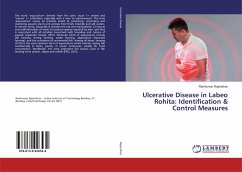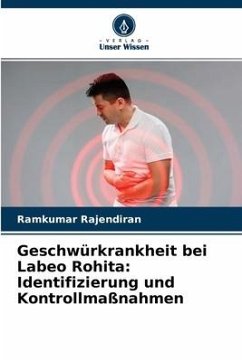
Ulcerative Disease in Labeo Rohita: Identification & Control Measures
Versandkostenfrei!
Versandfertig in 6-10 Tagen
47,99 €
inkl. MwSt.

PAYBACK Punkte
24 °P sammeln!
The word 'aquaculture' derived from the Latin 'aqua' (= water) and 'culture' (= cultivation, especially with a view to improvement). The term 'aquaculture' covers all activities aimed at producing, processing and marketing aquatic plants and animals from fresh, brackish and salt waters. In narrow terms, aquaculture includes the use and manipulation of natural and artificial bodies of water to produce species required by man, and thus is concerned with all activities concerned with breeding and culture of aquatic organisms (Awad, 2010). Particular kinds of aquaculture include fish farming, shri...
The word 'aquaculture' derived from the Latin 'aqua' (= water) and 'culture' (= cultivation, especially with a view to improvement). The term 'aquaculture' covers all activities aimed at producing, processing and marketing aquatic plants and animals from fresh, brackish and salt waters. In narrow terms, aquaculture includes the use and manipulation of natural and artificial bodies of water to produce species required by man, and thus is concerned with all activities concerned with breeding and culture of aquatic organisms (Awad, 2010). Particular kinds of aquaculture include fish farming, shrimp farming, oyster farming, algalculture (Seaweed farming), and the cultivation of ornamental fish. Among all these, farming of fish is the most common form of aquaculture which involves raising fish commercially in tanks, ponds, or ocean enclosures, usually for food consumption. Worldwide, the most important fish species used in fish farming were salmon, tilapia and catfish (FAO, 2012).












